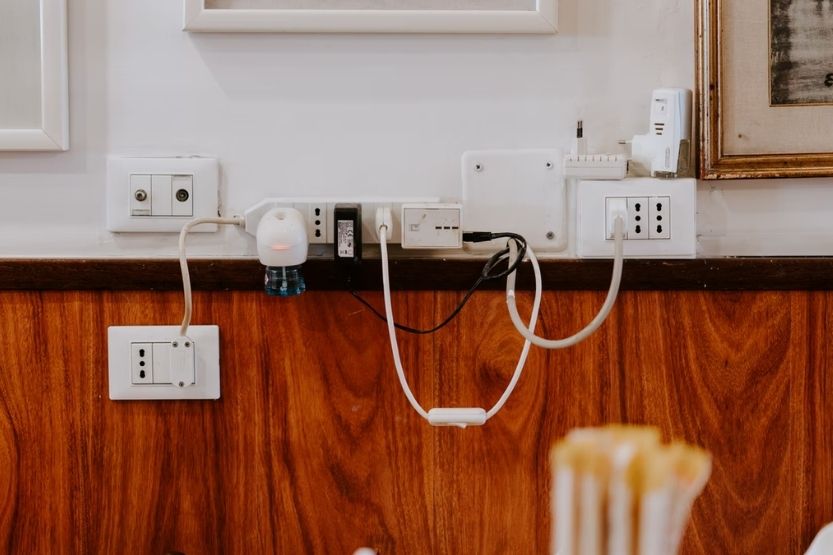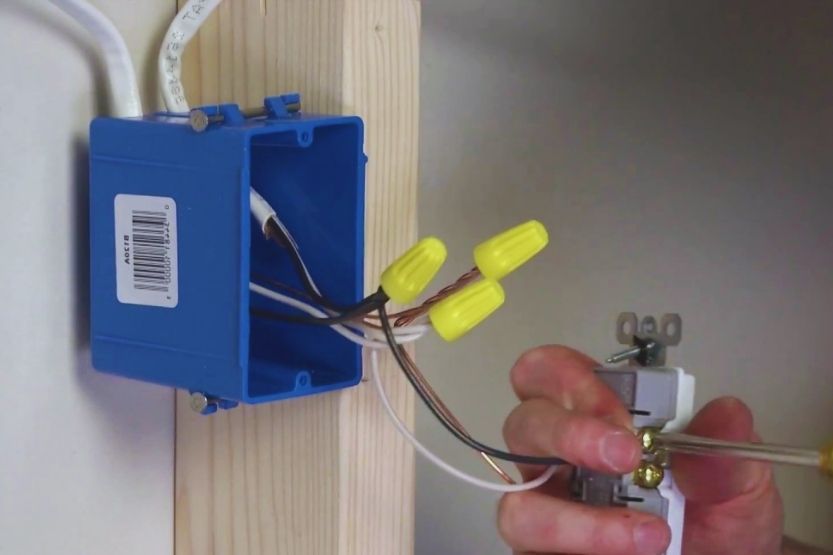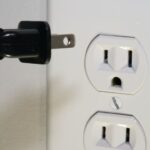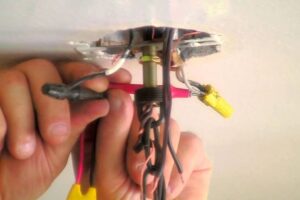There are several outlets in a typical home, with any number of devices plugged in at a given moment. But how much electricity can your outlets safely consume? For instance, how many outlets on a 15 amp circuit can you use without causing an overload?
There is no limit to how many outlets a 15 amp circuit can support. But it is mandated that a circuit cannot use more than 80% of its capacity. Since a single outlet can use 1.5 amps, putting eight outlets on a 15-amp circuit can be possible.
Read on to learn more about how many outlets are on a 15 amp circuit, what happens if too many outlets are on a circuit, and more.
How Many Outlets on a 15 Amp Circuit?

There is no set limit to how many outlets a 15-amp circuit can support. However, it is mandated that a circuit cannot use more than 80% of its capacity. Since a single outlet can use 1.5 amps, putting eight outlets on a 15-amp circuit can be possible.
Prevents Electrical Overloads and Fires
Circuit breakers are an important safety feature that prevents electrical overloads and fires from breaking out in a home or building. A requirement of the law, your home should have multiple circuit breakers. This practice prevents overloading caused by more than one appliance plugged into a single circuit.
No Actual Limit on the Number of Outlets
There is no actual limit on the number of outlets that a circuit breaker can hold. You may add as many extra plugs as you wish. This is possible so long as you don’t have to run devices or appliances overloading a 15-amp circuit breaker.
Meaning of Line and Load in Electricity
15-amp Circuit Breaker’s Limitation
80% of a Circuit’s Capacity
The National Electrical Code (NEC) states that you can only use 80% of a circuit’s capacity can be used. This is defined as three hours or more of constant load. You may use up to 100% of the circuit breaker capacity, but only for a limited time.
Possible to Run Eight Outlets
This also means that a 15-amp circuit breaker cannot go past 12 amps. This limit is to keep a circuit from tripping and cutting power constantly. The suggested current rating for each outlet is 1.5 amps, and it is possible to run eight outlets on a 15-amp circuit breaker.
Cause of Overloading
Even though you can have any number of outlets as you want on a 15-amp circuit, you cannot use them simultaneously. This is because the circuit can support only a maximum of 15 amps. For example, plugging a 10-amp oven toaster and a 10-amp flat iron simultaneously will cause the circuit breaker to overload and trip.
How to Prevent Overloading a 15-amp Circuit Breaker
Use Different Circuit Breakers for Every Part of Home
To prevent overloading, you can use different circuit breakers for every part of your home. Depending on the projected load capacity, you may use a 15 or 20-amp circuit breaker with the recommended wire size for each room.
Upgrade to a 20-amp Circuit When Needed
If you need to have more outlets on a single circuit breaker, upgrading to a 20-amp circuit will allow you to put ten outlets on one circuit. 20-amp circuit breakers are typically used for kitchens with power-heavy appliances such as refrigerators.
Can a Refrigerator Run on a 15-amp Circuit
A Fridge Only Needs 3-6 Amps
It is possible to run a large appliance, such as a refrigerator, on a 15-amp circuit breaker. Although a refrigerator is large, it only draws between three and six amps at a single time.
Spike in Energy Demand
It is, however, possible to make your refrigerator achieve a spike in energy demand. This may happen most especially if it is cooling or making ice. A refrigerator can run on a dedicated 15-amp circuit. But running a refrigerator on a 20-amp, 120-volt circuit maintains 80% of the maximum circuit capacity.
How Many Outlets Can Safely Run on a 20-amp Circuit
A 20-amp circuit can safely support ten outlets. Each outlet usually draws around 1.5 amps. This means that ten additional outlets would draw approximately 15 amps to a circuit.
Going by the rule of maintaining a maximum circuit capacity of 80%, ten outlets will enable you to achieve the maximum draw on the circuit.
What Type of Outlet Do You Need

Are you planning to install additional outlets on a circuit? If so, you must first know the type of outlet you should buy. There are various kinds of outlets available that are rated for different amperage.
Look at the Circuit Breaker
For instance, outlets bought at your local hardware store are rated for either 15 or 20 amps. Before you buy an outlet, look at your circuit breaker. Find the circuit that you will add new outlets to. Then see if you’re working with a 15 or 20-amp circuit.
Ground-fault Circuit Interrupter (GFCI) Outlet for Moisture-prone Room
You might be considering installing a new outlet in a moisture-prone room such as the following:
- Bathroom,
- Kitchen, or
- Laundry room.
If so, make sure to buy a ground-fault circuit interrupter (GFCI) outlet to comply with the national building code.
A safety measure required by modern code, this type of outlet comes with a test and reset button. It is designed to turn off and interrupt the circuit quickly should moisture get into the outlet.
What Is the Standard Outlet Height From the Floor?
What Are the Code Requirements for Kitchen Outlets
More detailed code requirements may be needed when installing new kitchen outlets. Additional requirements are based on increased electrical draw and the likelihood of water mixed with electrical current.
If the kitchen has 12 inches or more wall space, you should install an outlet around the counter area. The distance between one outlet to another should not be more than two feet (24 inches). Kitchen outlets are required to be GFCI for safety reasons.
Again, how many outlets are on a 15-amp circuit? There is no limit to how many outlets you can install when you have a 15 amp circuit breaker. However, following the one outlet per 1.5 amps, or the 80% of the circuit breaker’s capacity rule, you should install a maximum of eight outlets for a 15 amp circuit.
How Many Outlets Should a Bedroom Have
An Outlet for Every Six Feet Along the Wall
There is usually an outlet for around six feet along the wall in newly-built homes. There would be at least one outlet for each wall of the bedroom. Usually, the ceiling would also be an outlet or junction box to accommodate an overhead light fixture or ceiling fan.
A Masterbedroom Usually Has Eight Outlets
The master bedroom will typically have seven outlets on the walls and an additional 8th outlet up on the ceiling. This adheres to the NEC regulation of eight outlets running on a single 15-amp circuit breaker.
What Happens If There Are Too Many Outlets on a Circuit
Cause the Circuit to Overload
If you add too many outlets, you can cause the circuit to overload. This is especially true if all of them are drawing power simultaneously. Sometimes, a circuit can inadvertently occur if you run two powerful appliances simultaneously.
Tripped Circuit
If the circuit breaker box is functioning correctly, the circuit will be tripped and turned off to keep the circuit from overloading. But if the circuit is not working properly, it won’t trip and will fail to prevent an overload, possibly causing an electrical fire.
A Risk of Fire
It is important to ensure that outlets are kept at the 80% maximum limit that the circuit can contain. A fully-functioning circuit breaker will indeed step in to stop an overload. But you would not want to risk a fire starting in your home if it should fail.
How to Tell If a Circuit Is Overloaded
An overloaded circuit can pose a danger to your home. Fortunately, it is straightforward to tell if a circuit is transferring too much electricity than it can handle:
1. Flickering Lights
When a circuit is overloaded, the lights powered by it may start to flicker.
2. Sizzling Sound and a Burnt Odor
You may also hear sizzling and smell a burnt odor.
3. Discolored Outlet
An outlet that has gotten discolored much sooner than you expect may also be a sign of an overloaded circuit.
4. Slight Shock
You might also experience a slight shock when you plug something into the overloaded circuit.
Make the necessary repairs once you notice the signs that your circuit is overloaded. Ask the help of an experienced electrician to make sure that the faulty circuit is handled safely.
How to Add a New Outlet to a Circuit

Installing additional outlets is a good way of using available space in your home. It’s always convenient to have another outlet to plug a device or appliance into. It’s relatively easy to add a new outlet; make sure that your circuit breaker can support additional outlets.
To add a new outlet to an existing circuit, follow these steps:
- Turn Off the Power
- Remove the Existing Wall Outlet
- Feed the New Cable Wire
- Connect the New Cable Wire
- Wire the New Outlet
- Reconnect and Test
1. Turn Off the Power
On the circuit breaker box, turn the power off to the circuit you will work with. To verify that you turned off the power to the right circuit, shine a night light to an existing wall outlet on the same circuit to find out.
2. Remove the Existing Wall Outlet
- Take off the cover plate and housing from an existing outlet on the same circuit.
- Take the outlet out of the wall.
- Remove the wall wires that connect it to the existing circuit.
- Disconnect the outlet box from the back.
- Knock the additional hole out so that you can feed a new wire through the back.
3. Feed the New Cable Wire
Feed the new cable wire through the back hole of the existing outlet box. You will need enough wire to reach the location of the new outlet. Also, you will need an additional foot of cable to make the new connection. If you’re working with a 15-amp circuit, use a 14-gauge wire. It will be resilient enough to handle a 15-amp circuit’s power load.
4. Connect the New Cable Wire
- Connect the new cable to the existing outlet wires. You may opt to strip back and expose around 10 inches of the new wire to ensure that the connection is solid.
- Connect the corresponding wires, as in white wire to white wire, black wire to black, and ground to ground.
- Make sure that the new connection bundles are encased with plastic wire screws. That way, the connections are kept safe and secure.
5. Wire the New Outlet
- Find a location for the newly installed outlet.
- Cut a hole into the drywall that is large enough to contain the outlet box.
- Fish the new wire through the wall, then reconnect the ends to the new outlet.
- Make certain that each wire is connected to the appropriate connection in the outlet box. Also, ensure that the ground wire is grounded appropriately.
6. Reconnect and Test
- Once the connections are secured, reconnect the outlet screws and cover plates for both the new outlet and the existing outlet.
- Turn the power back on to the circuit.
- Test the outlets to ensure that power runs to both the existing and new outlets.
- Use a lamp or nightlight to verify if a circuit is functioning properly.
Conclusion – How Many Outlets on a 15 Amp Circuit?
There is no set limit to how many outlets a 15 amp circuit can support. However, it is mandated that a circuit cannot use more than 80% of its capacity. Since a single outlet can use 1.5 amps, putting eight outlets on a 15-amp circuit can be possible.
It is important to minimize the number of outlets on a circuit breaker. This is to prevent electrical overloading. Too many devices or appliances plugged into one breaker might exceed its designated circuit capacity.
But if you do decide to install additional outlets, make sure that you meet NEC standards and add the recommended number of outlets that your circuit breaker can handle. As discussed, a 15-amp circuit should have no more than eight outlets allowed.
Read next:



![Wiring Outlets in Series [How-to Guide] wiring outlets in series](https://homecarezen.com/wp-content/uploads/2022/08/wiring-outlets-in-series-150x150.jpg)

![Read more about the article Red Wire for Ceiling Fan [How to Wire]](https://homecarezen.com/wp-content/uploads/2021/10/red-wire-for-ceiling-fan-300x200.jpg)
